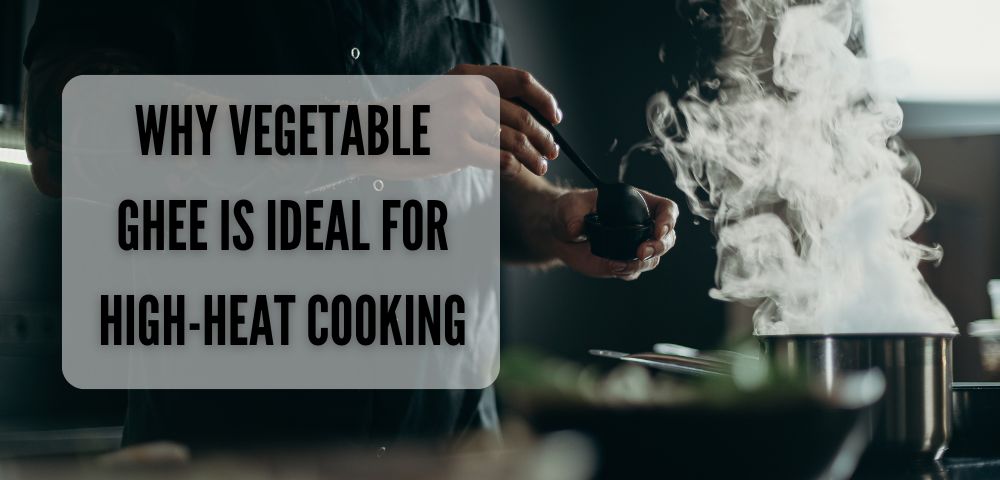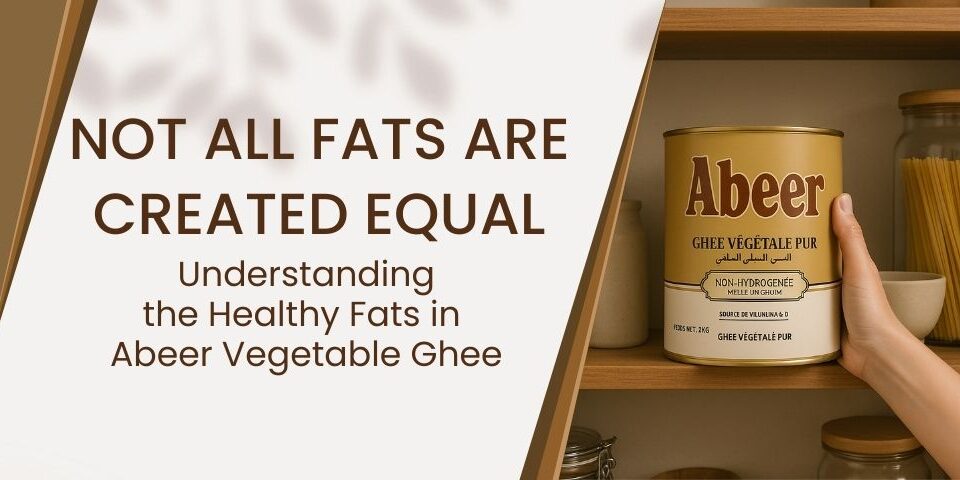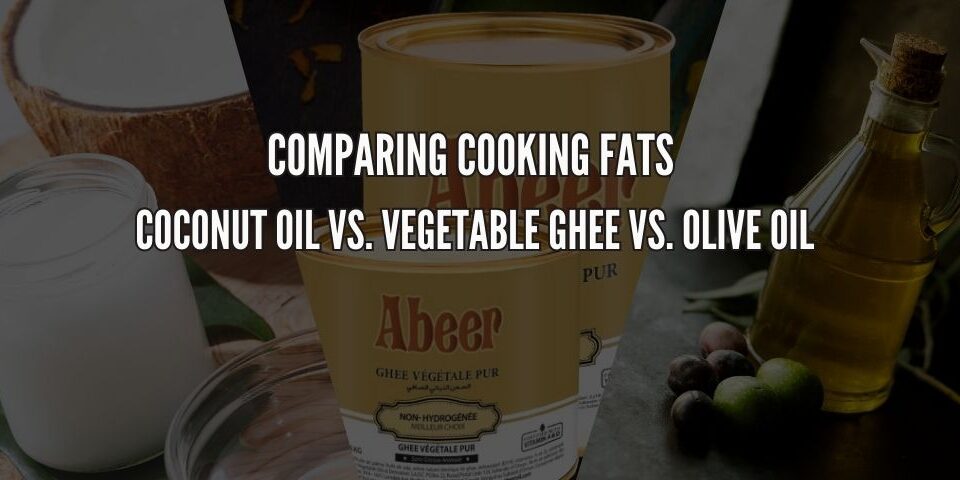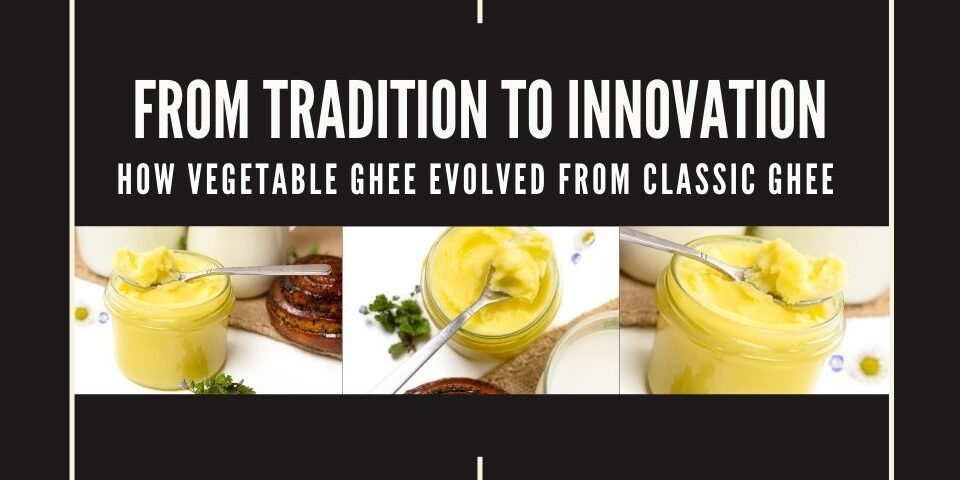
Traditional vs. Modern Cooking with Vegetable Ghee – Then & Now
March 26, 2025
From Tradition to Innovation: How Vegetable Ghee Evolved from Classic Ghee
April 10, 2025Why Vegetable Ghee Is Ideal for High-Heat Cooking

Why the Right Cooking Fat Matters
When it comes to cooking, not all oils and fats behave the same under heat. Some break down quickly, lose flavor, or even release harmful compounds when overheated. The key to choosing the right fat often comes down to one scientific term: the smoke point.
If you love frying, roasting, or stir-frying, understanding smoke points will help you make healthier, better-tasting meals. In this guide, we’ll break down what a smoke point is—and why vegetable ghee is one of the best choices for high-heat cooking.
What Is a Smoke Point?
The smoke point of a fat or oil is the temperature at which it starts to break down and produce visible smoke. When an oil reaches its smoke point:
-
It begins to lose its flavor and nutritional value
-
It can release free radicals and harmful compounds
-
The oil may impart a burnt or bitter taste to your food
So, if you’re cooking at high heat (like searing a steak or frying potatoes), using a fat with a low smoke point can ruin your dish—and potentially your health.
Why Vegetable Ghee Smoke Point is High
Vegetable ghee has a smoke point of approximately 450°F (232°C)—much higher than most common cooking fats.
Here’s how it compares:
| Fat/Oil | Approx. Smoke Point |
|---|---|
| Vegetable Ghee | 450°F (232°C) |
| Butter | 300°F (150°C) |
| Coconut Oil | 350°F (177°C) |
| Olive Oil (EVOO) | 375°F (190°C) |
| Canola Oil | 400°F (204°C) |
The reason vegetable ghee can withstand high heat is that it’s made from refined plant oils with low moisture and milk solids removed. That’s why it doesn’t burn easily and retains its stability during cooking.
Want to understand more about what makes vegetable ghee special compared to butter ghee? reads our article about Vegetable Ghee vs. Butter Ghee: Which is Right for You?
When to Use Vegetable Ghee for High-Heat Cooking
Here are some of the best ways to use vegetable ghee in high-heat recipes:
1. Deep-Frying
Vegetable ghee won’t smoke or break down like many oils, making it ideal for:
-
Samosas
-
Falafel
-
Fried tofu
-
Potato wedges or fries
Read our full guide on using vegetable ghee for deep-frying.
2. Searing and Roasting
Because it doesn’t burn quickly, vegetable ghee creates a perfect golden crust on:
-
Steaks and chicken thighs
-
Roasted vegetables (especially potatoes, carrots, and cauliflower)
-
Flatbreads like naan or parathas
3. Stir-Frying
In stir-fried dishes where you need to cook quickly over high heat, vegetable ghee adds flavor and holds up without smoking:
-
Stir-fried noodles or rice
-
Paneer tikka
-
Vegetable stir-fry
Health Benefits of Using the Right Fat
Overheating oil can lead to the formation of:
-
Acrylamide (a potentially harmful chemical)
-
Oxidized fats that can stress the body’s cells
-
Unpleasant taste and smell
By using vegetable ghee, you avoid these problems. Plus, most quality vegetable ghees are:
-
Non-hydrogenated
-
Trans fat-free
-
Lactose-free and vegan
Tips for Using Vegetable Ghee in High-Heat Cooking
-
Preheat it slowly: Start on medium heat and raise the temperature gradually
-
Don’t reuse burnt ghee: Even though it’s heat-stable, discard it once it darkens or smells off
-
Store properly: Keep it in an airtight container away from sunlight to preserve quality
Make High-Heat Cooking Safer and Tastier
Vegetable ghee is a powerful tool in the kitchen—not just for its rich flavor, but because it performs exceptionally well under high temperatures. Whether you’re pan-searing, roasting, or deep-frying, its high smoke point makes it one of the healthiest and most reliable fats you can use.
So next time you’re reaching for an oil that can take the heat, try Abeer Vegetable Ghee—a non-hydrogenated, plant-based option made for real cooking.



